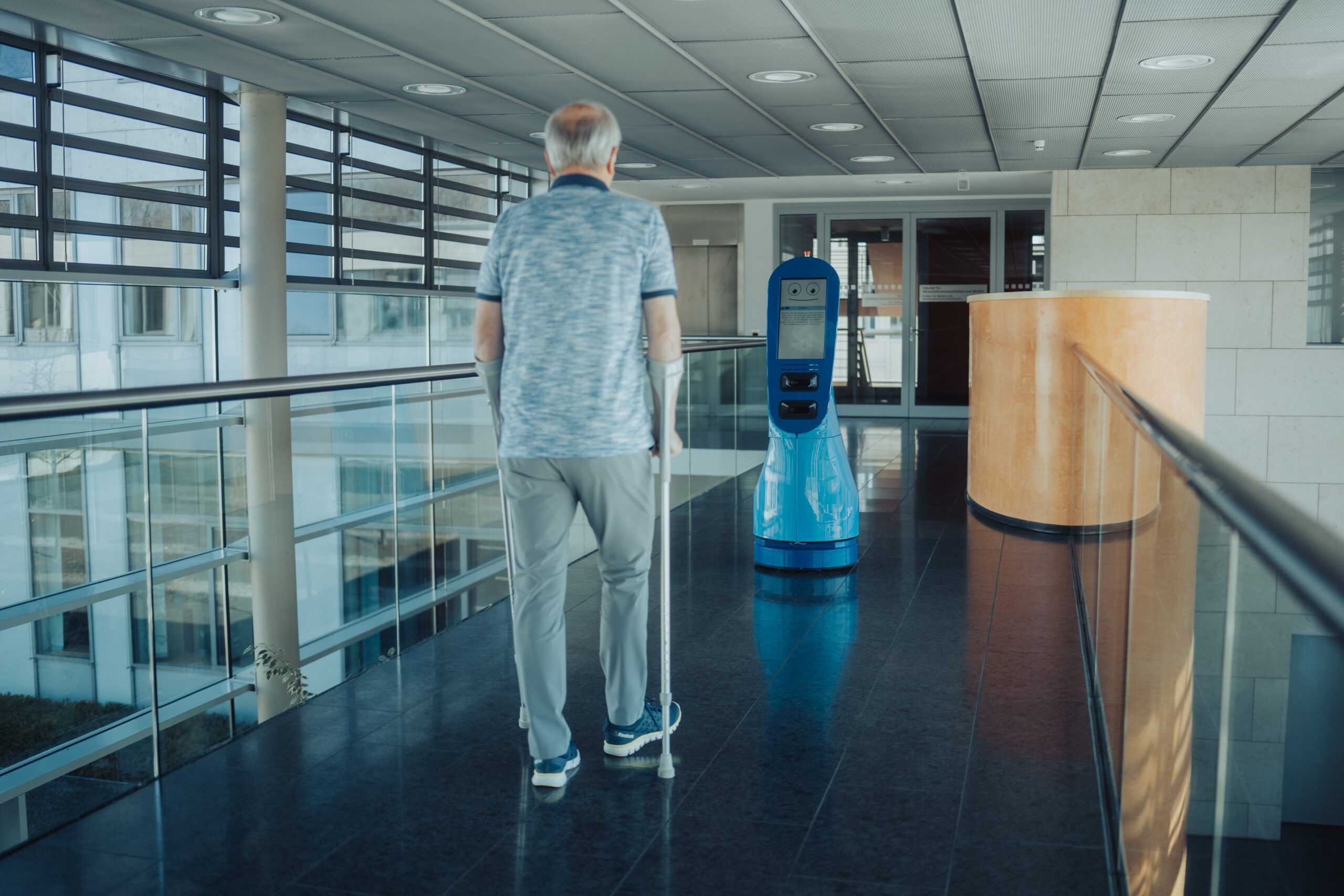THERY accompanies gait training on crutches
"Robots, algorithms and AI as colleagues could be considered a useful tool to buffer the effects of staff shortages due to demographic changes and may also help reduce the burden on employees."
Prof. Dr. Jutta Rump
Ludwigshafen University of Business and Society
Cloud-based Therapy-Management-System (TMS)
- Physiotherapists are provided with a personal login for logging into the TMS
- Allows for design of clinic-specific training regimens, which may also be adapted to the individual needs of each patient
- Training sessions can be scheduled flexibly both during the day and in the evening, at weekends, and on holidays
- Before initiating the training programme, each patient is provided with an RFID chip for user identification
- Robot management system
- Overall progress of the training sessions is being tracked and documented and therapy progress data can be exported to the patient's medical record upon completion of the therapy programm
- Privacy: data handling according to the high standards of GDPR
- Both server operator and the actual server are based in Germany
Technical data
- dimensions: 500 mm (diameter) x 1500 mm (height)
- weight: 60 kg
- maximum speed: up to 0,8 m/s
- navigation: Autonomous navigation based on a map created by the robot itself (SLAM)
- power supply: autonomus charging station
- safety: functional safety laser scanner in direction of travel with protective field; obstacle avoidance algorithms;
all-round safety running strip






